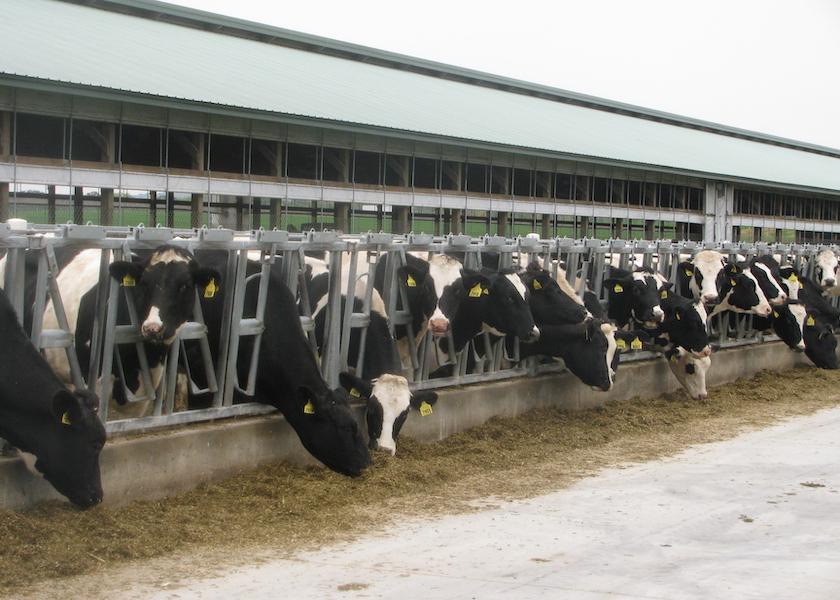Tuberculosis is a Rising Concern in U.S. Cattle Herds

And old disease has become new again, with the growing emergence of positive cases of bovine tuberculosis (TB) in cattle herds across the United States.
“Tuberculosis is a ‘zoonotic’ disease, which means it can spread between animals and humans,” explained New Mexico State Veterinarian Dr. Ralph Zimmerman. “When it spreads from humans to animals, we call it a ‘reverse zoonotic event.’”
Zimmerman told the audience of the 2020 High Plains Dairy Conference that zoonotic diseases are on the rise worldwide. According to the U.S. Centers for Disease Control and Prevention (CDC), three out of every four new infectious diseases in people also can be spread by animals.
The potential for TB to spread from humans to animals is especially concerning, because about a third of the world’s human population is infected with TB. Cattle are a susceptible animal species, but the bacterial infection can be contracted by all mammals, including pigs, goats, deer, and other wildlife.
Exposure to wildlife is a potential form of transmission to cattle herds. In northeast lower Michigan, the deer population has been a concerning source of TB for many years. Recently, TB infections from Michigan deer have been shown to infect humans as well. In just the past two years, five DNR workers and three hunters have contracted TB, likely via their interaction with infected deer.
Zimmerman said TB infections can spread through respiratory droplets or saliva of infected hosts; via exposure to contaminated saliva, urine or manure at feeding and watering sites; and from drinking raw, unpasteurized milk from infected animals. Infected TB hosts can be in either an “active” state of sickness in which they are visibly sick and contagious, or a “latent” infection period in which the animal or person appears totally healthy and cannot infect others.
Vertical transmission to calves is a serious threat in infected herds feeding unpasteurized milk. Also, people consuming raw dairy products is a common practice in many parts of the world, including the countries of origin of a large share of U.S. dairy farm workers. In another presentation at the 2020 High Plains Dairy Conference, Dr. Anabel Rodriguez, Assistant Professor at the University of Texas Health Science Center at Houston School of Public Health, shared research findings on TB knowledge and infection risk factors among dairy workers in West Texas.
Of the 225 workers surveyed, about a third reported consuming raw dairy products, either in their non-U.S. home country (81.4%) or while working on a U.S. dairy farm (18.6%). Of the 140 workers in the study who were tested for TB, 10% tested positive for latent tuberculosis infection (LTBI).
The USDA’s National Tuberculosis Eradication Program provides for TB surveillance by routine testing of animals at slaughter, as well as pre-movement health screening of animals before they are transferred across state lines. A slaughter check at a Minnesota packing plant recently detected TB in a beef cow from a herd in South Dakota, the first confirmed case of TB in the state since 2017.
TB infection in a herd can be financially devastating, according to Dr. Keith Poulsen, Director of the Wisconsin Veterinary Diagnostic Laboratory at the University of Wisconsin. “Not only does the disease take a toll on animal health and productivity, but it can endanger workers and limit animal sales by the farm,” Poulsen explained. “Herds confirmed infected will be placed under quarantine with routine, required testing and limited animal movement, probably for several years.”
Quarantine might affect neighboring herds as well, depending on their proximity to the confirmed herd. And Poulsen pointed out that quarantine also could impact nearby bull studs that sell genetics all over the world.
Zimmerman advised producers to adopt as many of the following tips as possible to protect herds and people from TB:
- Keep a closed herd and raise replacement stock.
- Buy animals from an accredited TB-free herd.
- Test new animals prior to purchase; isolate them for 60 days and retest before commingling.
- Restrict/eliminate contact between your herd and other herds.
- Disinfect trailers or facilities that housed newly purchased animals or animals not originating from your herd.
- Keep on-farm visitors away from your herd.
- Keep fences in good condition to separate your herd from wildlife.
- Have a comprehensive new employee hiring protocol that includes TB testing.
- Pasteurize waste milk fed to calves.
- Do not allow humans to consume unpasteurized milk from your farm.
In Wisconsin, Poulsen is championing an effort to bring health services to dairies to test and vaccinate workers for TB, as well as provide health screenings and other vaccinations. The Badger Partners in Health and Safety is working collaboratively with nursing schools and private funding sources to bring these services to migrant and under-served dairy farm workers in the state.







